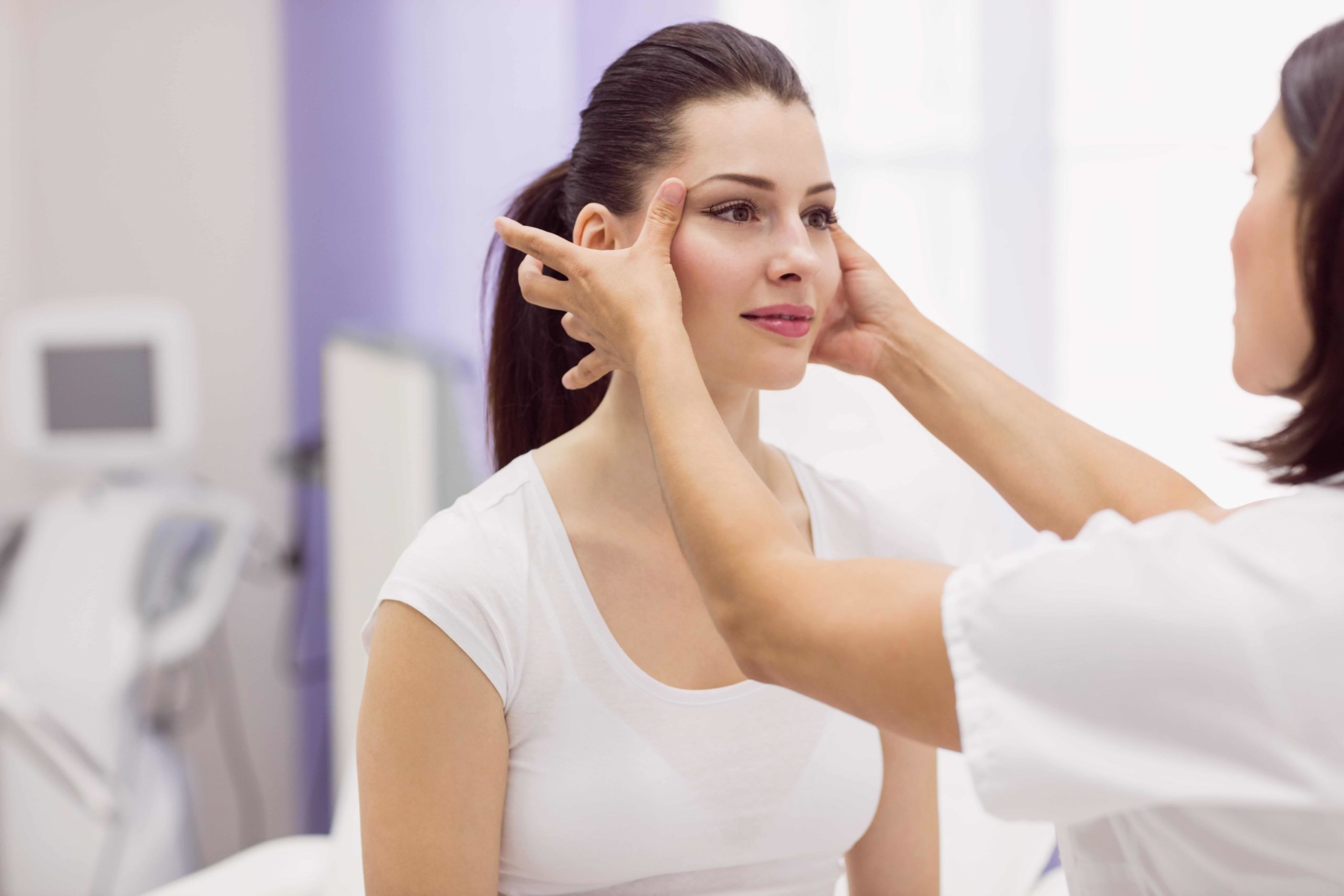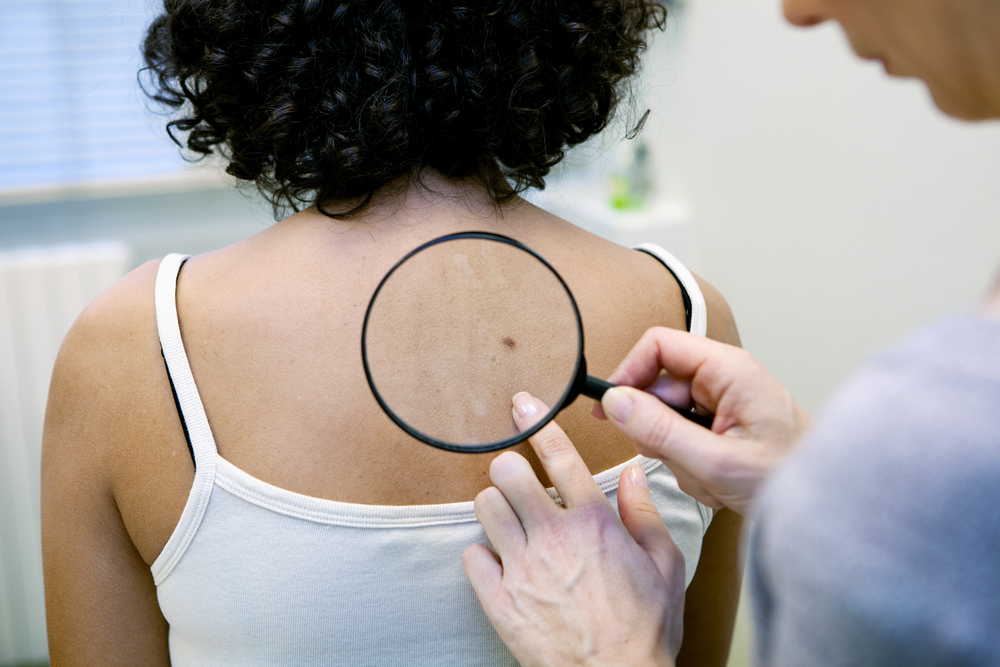- Chronic dry eyelid skin is likely a symptom of eyelid dermatitis, a common but rarely serious condition.
- Eyelid dermatitis can be caused by environmental factors or chronic disease.
- Eyelid dermatitis symptoms, if not completely curable, can usually be managed through simple lifestyle changes.
Is the skin on your eyelids scaly, itchy and dry? If so, you’re probably suffering from eyelid dermatitis.
Dermatitis is a medical term for skin inflammation. You might have heard another common name used to describe it as well — eczema.
Dermatitis can affect skin anywhere on the body, but is especially pronounced on the eyelids and around the eyes because the skin there is especially thin. Sensitive skin, combined with a high blood vessel to fat ratio, is a perfect recipe for dry eyelid skin.
Eyelid dermatitis is a fairly common ailment that can result from a host of different causes, both internal and external. Interestingly, female patients make up 90 percent of eyelid dermatitis patients.
What Causes Dry Eyelid Dermatitis?
Eyelid dermatitis is often split into two categories: contact eyelid dermatitis and atopic eyelid dermatitis.
From the Outside In: Contact Eyelid Dermatitis
Eyelid dermatitis is usually attributed to contact eyelid dermatitis, which results from an outside substance coming into contact with your skin. This common form of dermatitis can be broken down even further into irritant and allergic contact dermatitis.
- Irritant contact dermatitis
Irritant contact dermatitis is caused when skin touches an irritating substance. The area around the eye will have redness, burning, stinging, general irritation and dry skin, especially on the eyelid(s). These symptoms usually appear quickly after exposure but can be delayed in the case of mild irritants. Only the eyelid skin exposed to the irritant will react.
- Allergic contact dermatitis
Allergic contact dermatitis occurs when your immune system has a negative reaction to a substance you’ve come into contact with. This allergic reaction can develop at any time, which explains why your favorite mascara or eyeshadow can cause dry skin on your eyelids without warning. This results in redness, itching and scaling in the eye area. Symptoms can be delayed or persistent and often spread from where the skin was initially exposed to an allergen.
According to Dr. Maryam Zamani, a facial aesthetics and oculoplastic surgeon based in London, England, it’s this variety of presentations in the body that makes eyelid dermatitis unique among skin conditions.
“The development of eyelid dermatitis is multifactorial and distinct from other types of dermatitis, which are divided into irritant contact dermatitis and allergic dermatitis. Eyelid dermatitis is dermatitis specific to the eyelids but with a similar presentation to what it has on other parts of the body,” Zamani explains.
Irritant contact and allergic dermatitis can exist simultaneously and share similar characteristics, making it hard sometimes to differentiate between the two conditions. However, allergic contact dermatitis comprises around 75% of all eyelid dermatitis cases.
An allergic reaction can last for weeks and even affect areas of skin that didn’t touch the allergen. This is the most telling way to spot the difference between allergic and irritant contact dermatitis.
» Learn more about Blepharitis, which is another condition associated with irritation of the eyelids and eyelid margins.
From the Inside Out: Atopic Eyelid Dermatitis
People are typically born with atopic eyelid dermatitis, a chronic skin condition that is likely genetic. The primary symptom is a sensitive eye area that results in dry, itchy skin conditions. A red rash can break out during a flare-up.
Other common symptoms include:
- Light or dark spots
- Thick, leathery skin
- A rash that bubbles and weeps clear fluid
Though the cause isn’t known, it’s believed that people with atopic eyelid dermatitis have more inflammatory skin cells and a weaker skin barrier than the average person. This combination predisposes them to having dryer skin that is more susceptible to irritants.
There are several factors that commonly result in flare-ups of itchy, rashy skin for those with the condition:
- Long, hot showers
- Scratching
- Extreme dry weather
- Harsh cleansers
- Common allergens (pet dander, pollen, etc.)
- Stress
Seborrheic dermatitis is a common type of atopic dermatitis that affects the scalp and other oil-prone areas — including eyelids. The cause isn’t completely understood, but it is usually attributed to fungus or an irregular immune system response.
The main characteristics of seborrheic dermatitis include greasy skin accompanied by redness, itching and scaly, dry skin on the eyelid.
Treating Contact Eyelid Dermatitis
When suffering from contact eyelid dermatitis symptoms such as dry itchy red skin on the eyelids, it’s important to keep the area clean and avoid touching it as much as possible. This will keep irritants and allergens from spreading and reduce the chance of infection.
Because the most common cases of eyelid dermatitis are caused by outside irritants or allergens, the first treatment attempt should be identifying and eliminating any items causing inflammation.
The most obvious culprits are makeup and body care products applied on or near the eyes, including:
- Cosmetics
- Contact solution
- Eyelash curlers
- Facial lotions and hair products
To identify and treat an allergen or irritant, eliminate all products you commonly use on or near your face. When reintroducing them one by one, take note of how they affect your eyes and facial skin.
Your doctor can also perform a range of tests — patch test, scratch test, intradermal allergy test or radioallergosorbent test — to determine which allergens are responsible for your dry red skin and discomfort.
For ongoing or especially tough symptoms, low- to mid-potency topical steroid ointments like triamcinolone ointment, and topical calcineurin inhibitors (TCIs) like tacrolimus ointment or pimecrolimus cream, can be applied. An oral corticosteroid like prednisone can be prescribed for moderate to severe symptoms.
Topical treatments should be used as sparingly as possible because eyelid skin is delicate and more prone to adverse effects.
Treating Chronic Atopic Eyelid Dermatitis
In the case of atopic eyelid dermatitis, there’s currently no known cause of the condition and therefore no specific cure.
While mild symptoms sometimes disappear on their own, there are several prescription and over-the-counter products that are widely used to treat more serious symptoms.
Similar to contact eyelid dermatitis, low- to mid-potency topical steroid ointment can be applied to flare-ups. For more serious or persistent symptoms, TCIs can be used. Antihistamines such as diphenhydramine or hydroxyzine can be taken to prevent itching and scratching.
Thick moisturizers like Cetaphil, Eucerin, Aquaphor and Aveeno should be applied to maintain the moisture barrier that keeps dry skin on the eyelids and around the eyes from becoming irritated.
Can I Prevent Eyelid Dermatitis?
Both contact and atopic eyelid dermatitis are caused by a combination of internal and environmental factors. The two conditions can even overlap.
Sharon T. Mclaughlin-Weber, MD, FACS, the founder of New York City-based Wrinkle Helper, has seen more than her fair share of dry eyelid skin and various symptoms of eyelid dermatitis.
Her recommendation for prevention? Identify and avoid irritants and allergens and don’t touch your eye area.
“Finding out what the trigger substance is can be difficult. Just about anything our hands touch can be transferred to the delicate eye skin whenever we touch our eyes. Metals from jewelry and even nail polish can cause eyelid irritation.” says Mclaughlin-Weber.
“Prevention is really the best treatment. Find the source of irritation and avoid it. Refrain from touching your eyes as much as possible.”
Once you’re able to identify the allergens and irritants responsible for your symptoms, you’re well on your way to handling eyelid dermatitis.
There are also several lifestyle changes that can help to prevent and/or eliminate the symptoms of eyelid dermatitis:
1. Eliminate potential food allergens
Foods like eggs, peanuts, milk, fish, soy and wheat can cause eyelid dermatitis to flare-up. Try removing these items from your diet and paying careful attention to how your body reacts as you reintroduce each one.
2. Invest in protective eyewear
If you’re in a dry, dusty environment or there are known irritants in the area, try to protect the skin around your eyes with goggles or glasses.
3. Stay moisturized
Keeping your skin moist is the number one way to prevent the irritation and dry skin that leads to scratching.
4. Take shorter, cooler showers
This not only limits time spent in an area rife with potential irritants; it also protects your skin from having too much moisture removed by extreme heat and harsh cleansers.
5. Use mild, gentle skin products
Use mild soaps, lotions, hair care and other products that don’t contain formaldehyde, lanolin, parabens or fragrance — all of which are common irritants. Try to seek out hypoallergenic versions of your favorite products whenever possible.
6. Treat your skin gently
This includes watching out for clothing that irritates your skin and drying yourself gently after bathing or washing your face.
7. Avoid scratching
Scratching causes more itching and also tears up your skin, making you more susceptible to infection.
Home Remedies
There is no permanent cure for atopic eyelid dermatitis, yet contact eyelid dermatitis can be prevented by avoiding known allergens and irritants.
That means most natural remedies revolve around treating the discomfort that accompanies eyelid dermatitis, including swelling, itching, redness and flaky or dry skin on the eyelid and around the eyes. Common DIY remedies include:
- Cold compresses saturated with milk or water and applied to skin
- Cold cucumber slices placed on the eyes
- Skin salve made from plain oatmeal and honey applied to skin
- Aloe vera applied to skin
- Hypoallergenic moisturizers applied regularly to skin
You don’t have to live with itching, flaky skin or any other uncomfortable and unsightly skin conditions associated with eyelid dermatitis. This common ailment is often manageable, if not fully treatable, when you’re aware of simple lifestyle changes you can make to avoid common allergens and irritants that wreak havoc on your sensitive skin.









